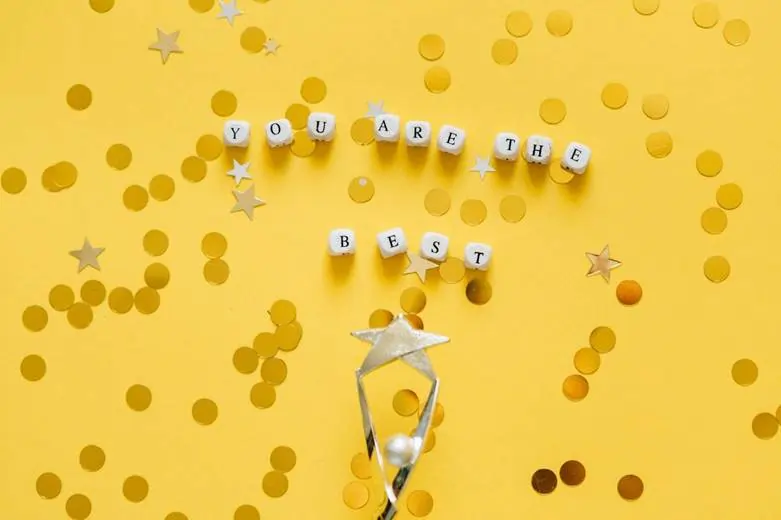Source: Pexels
You’ve probably been awarded a badge online at some point. Maybe more than a few. Or maybe someone tagged your name in a congratulatory post and added a confetti emoji. It felt nice, didn’t it? But that’s pretty much it. “Nice” cannot leave a lasting impression.
Now compare that to the time someone handed you something. A coin, a pin, a medal, something simple. But something you had to earn. There’s a good chance you still know where it is.
Why is that? Because ultimately, for something to be meaningful, it has to actually mean something, and since we’re still physical beings, physical objects (especially when rare, especially when earned), trump digital every time.
What Exactly Are Physical Tokens?
Tokens are custom-made objects, like coins, pins, medallions, or small emblems, that are intended to symbolize something bigger than themselves. They’re used at military ceremonies, company milestones and anniversaries, alumni reunions, volunteer organizations, and more. As you can probably guess, they’re rarely about monetary worth. Their main purpose is to promote shared identity, personal effort, or belonging to something that matters (something bigger than yourself; you’ll see this theme repeated throughout the article).
A challenge coin, for instance, might not look like much to an outsider, but they’re a powerful symbol with a rich tradition to those in the know. Traditionally used in the military (and now widely adopted by tech firms, nonprofits, and even esports organizations), they’re not given out casually. When someone hands you one, it’s with intention. It says you’re not just associated, but actually recognized. This Challenge Coin Background resource breaks down their military and organizational roots, and also explains why they’re increasingly used in nonprofits, at community events, in sports teams, and even in business organizations.
The Psychology Behind the Weight
We mentioned that physical tokens can carry a lot of weight (when earned). But why is that? There’s actually a psychological explanation for this. When you receive a physical token in a real-world setting (whether from a leader, mentor, or peer), it triggers what psychologists call identity fusion. This is the state in which personal identity merges with group identity to the point where group success feels like personal success. And objects anchor that identity.
But what’s equally interesting here is that physical objects carry much more weight than digital ones. A virtual badge on your profile might last until the platform updates. But a coin you received after your first year in a tight-knit community, for example? That’s probably staying in your drawer for decades.
Researchers have found that people who strongly identify with a group will go out of their way for it. Even when there’s no benefit. In fact, even when it costs them their life. And again, physical rituals and symbols help glue that bond down.
Ritual, Not Routine
Recognition without some kind of moment feels hollow. You can automate a certificate, but you can’t automate meaning.
It’s easy to hand someone a PDF certificate and call it recognition. It’s efficient and practical. But efficiency and practicality do not equal meaning. Rituals do.
Whether it’s a patch ceremony at a firehouse or a small custom coin handed out after completing an elite leadership program, the token represents an initiation: an inside status that isn’t available to just anyone. It’s only for those who were there.
Tokens are key here because they’re tied to time. They attach emotional value to a specific moment, and that’s not something you can automate.
Why Physical Tokens Will Always Work
You might be thinking, “Aren’t we past this? Isn’t everything online now?” Sure, we’ve got a million tools for connection. Doesn’t mean they truly connect people with one another.
A HBR report made a simple point: meaningful awards often outperform money long-term when it comes to motivation. This might seem ludicrous at first (who wouldn’t want more money?), but if you think about it a little deeper, it makes sense. Symbolic rewards tap into identity and status, not just bank accounts. And people want (often not even consciously) to belong, not just be paid.
So when your community needs cohesion, or your brand needs internal loyalty (not just awareness), it makes sense to craft something people can actually hold. Even better if they have to earn it.
From Clubs to Corporations, It’s the Same Equation
Whether you’re leading a startup team, a student society, a niche online forum, or a veterans’ organization, the math we laid out here doesn’t change. Communities form through repetition, recognition, and ritual. And physical tokens, especially thoughtfully designed ones, amplify all three.
But the trick isn’t just to produce them. The trick is to make them mean something. So, tie them to milestones. Link them to effort. Make them rare. And don’t hand them out like business cards. They lose their power that way. Be intentional so they can activate pride and personal meaning.
Read more: The Business of Growing: A Guide to Agricultural Entrepreneurship
What Your Mouth Says About Your Overall Health
How Touch Panels Shape the Future of Industrial Automation










